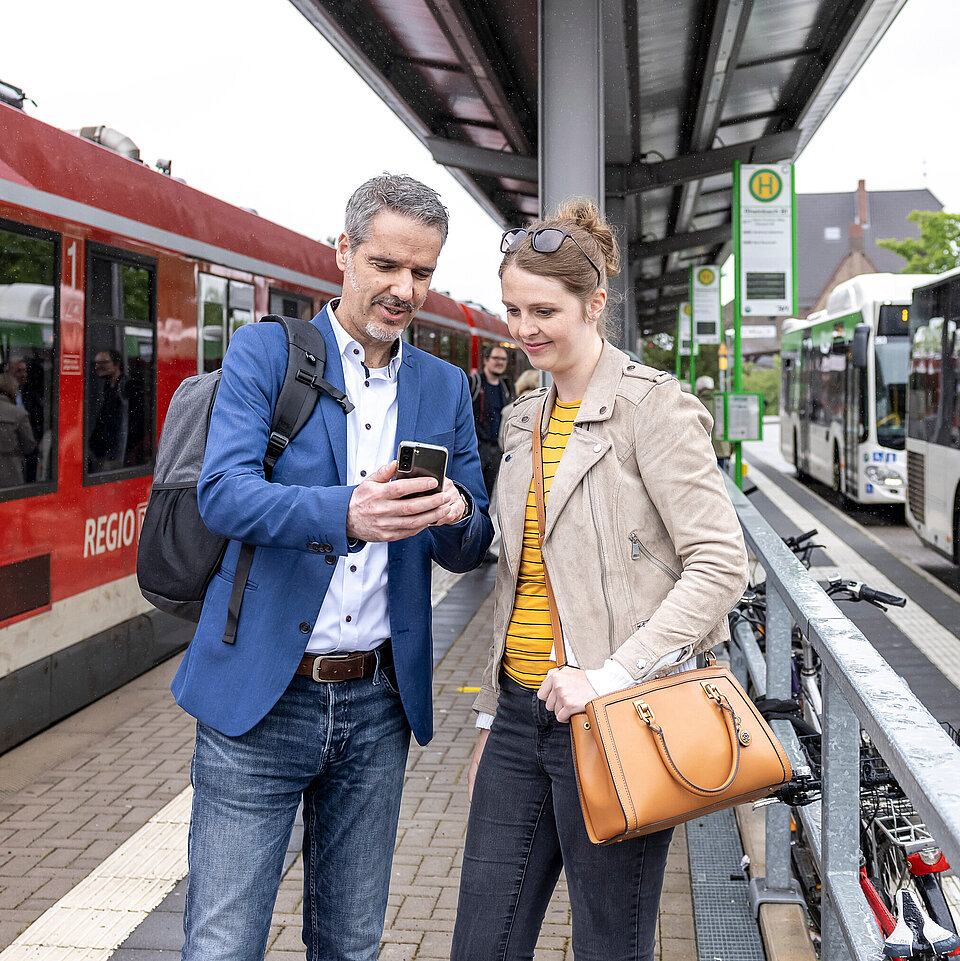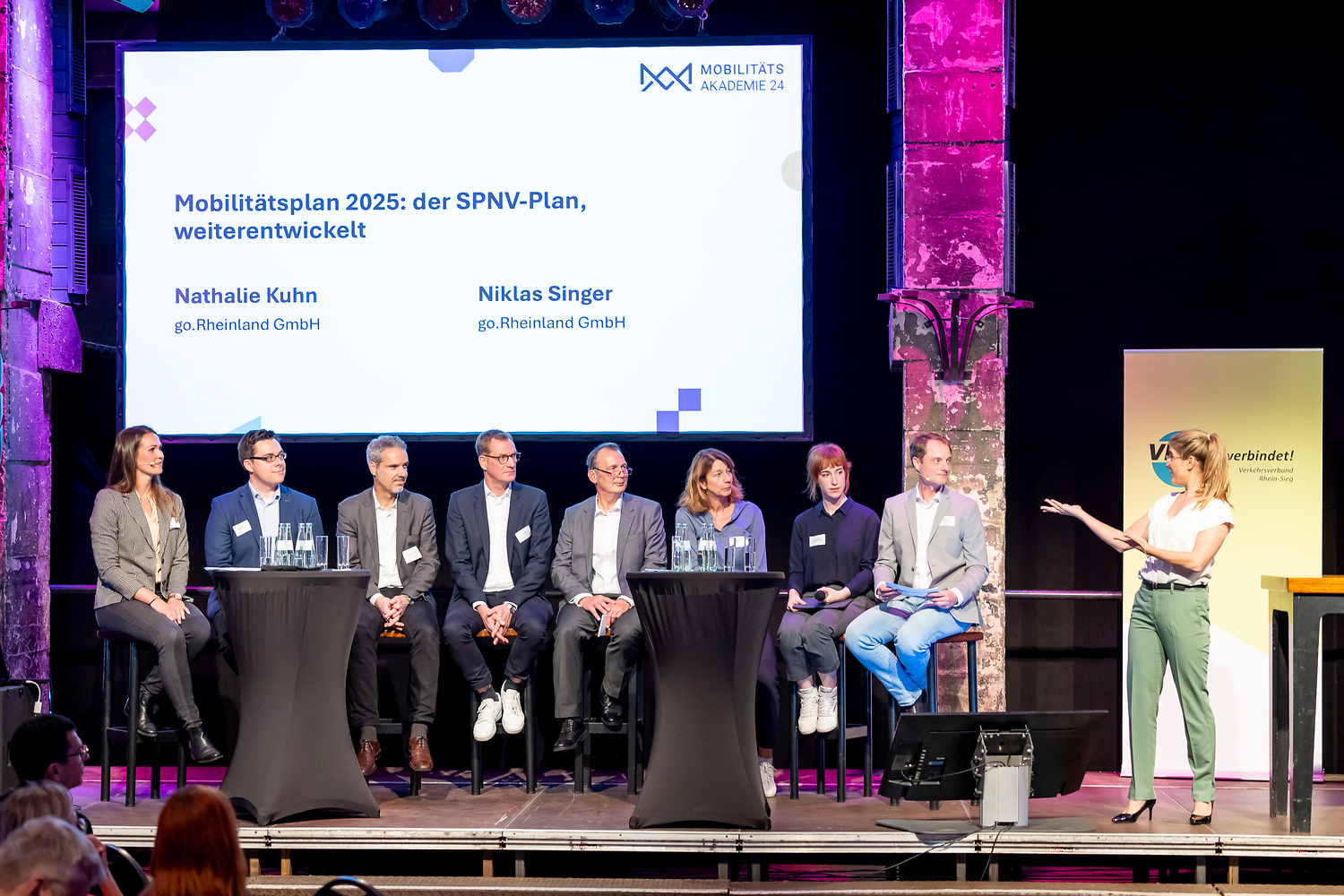More than local transport: the Mobility Plan 2025
From transport network to mobility network: go.Rheinland, VRS and AVV look at the big picture

The demands on mobility have changed - and with them the tasks of modern local transport planning. People expect flexible, reliable and well-connected services that link all modes of transport in a meaningful way. This is precisely the aim of the new Mobility Plan/SPNV Local Transport Plan 2025: a joint concept by go.Rheinland, Verkehrsverbund Rhein-Sieg (VRS) and Aacherner Verkehrsverbund (AVV), which for the first time takes a holistic view of all forms of mobility in the Rhineland - from rail transport to e-scooters.
A holistic approach to mobility
Mobility no longer ends at the platform - and local transport has long been more than just buses and trains. With the Mobility Plan 2025, go.Rheinland, AVV and VRS are presenting a joint concept that takes a holistic approach to mobility in the Rhineland for the first time. The plan interlinks local rail passenger transport (SPNV), light rail, bus, bicycle, e-scooter, on-demand and sharing services to create a consistent, reliable system. Local transport that is geared towards people's needs - a forward-looking model for mobility in the Rhineland.

"We are thus consistently continuing on the path from a transport network to a mobility network. The Mobility Plan 2025, which has already been described in our committees as the basic law of local transport, will set the guidelines for regional transport planning in the coming years."
Participation that works
What makes this plan special is that it was not developed in a quiet chamber, but is based on active participation. Over 160 submissions from politics, business and the general public - including people with physical disabilities - have been incorporated. The topics ranged from infrastructure issues to specific requests for regional rail services.

The result is a plan that is closer to people's needs than ever before - and brings together the four pillars of regional mobility:
- the regional public transport authority,
- local public transport/SPNV investment promotion,
- regional mobility development and mobility management,
- the associated tasks of the AVV and VRS transport associations.
That went well:
- Broad participation: over 160 responses from stakeholders and the public
- Developed in partnership: close cooperation with AVV and VRS
- Holistic approach: integration of regional rail transport, local public transport, infrastructure, digitalization, mobility development/management
- Suitable for everyday use: focus on travel chains, accessibility and user-friendliness

Together for NRW
The Mobility Plan 2025 is not just a regional project - it is part of a state-wide understanding of mobility. go.Rheinland, Verkehrsverbund Rhein-Ruhr (VRR) and Nahverkehr Westfalen-Lippe (NWL) have agreed on a common basic structure as part of their planning. The aim: a coordinated focus on the role of mobility associations in NRW.
The mobility plan / SPNV local transport plan 2025 from go.Rheinland addresses both the region-specific requirements and the concerns of the AVV and VRS associations - and thus creates a strong foundation for coordinated mobility development throughout NRW.
What's new about the Mobility Plan 2025?
- First joint plan by go.Rheinland, VRS and AVV
- Holistic consideration of all modes of transport - from regional rail transport to sharing services
- Over 160 participants from the public, politics and business
- Clear focus on user-friendliness, accessibility and suitability for everyday use
- Coordinated structure with VRR and NWL for nationwide comparability